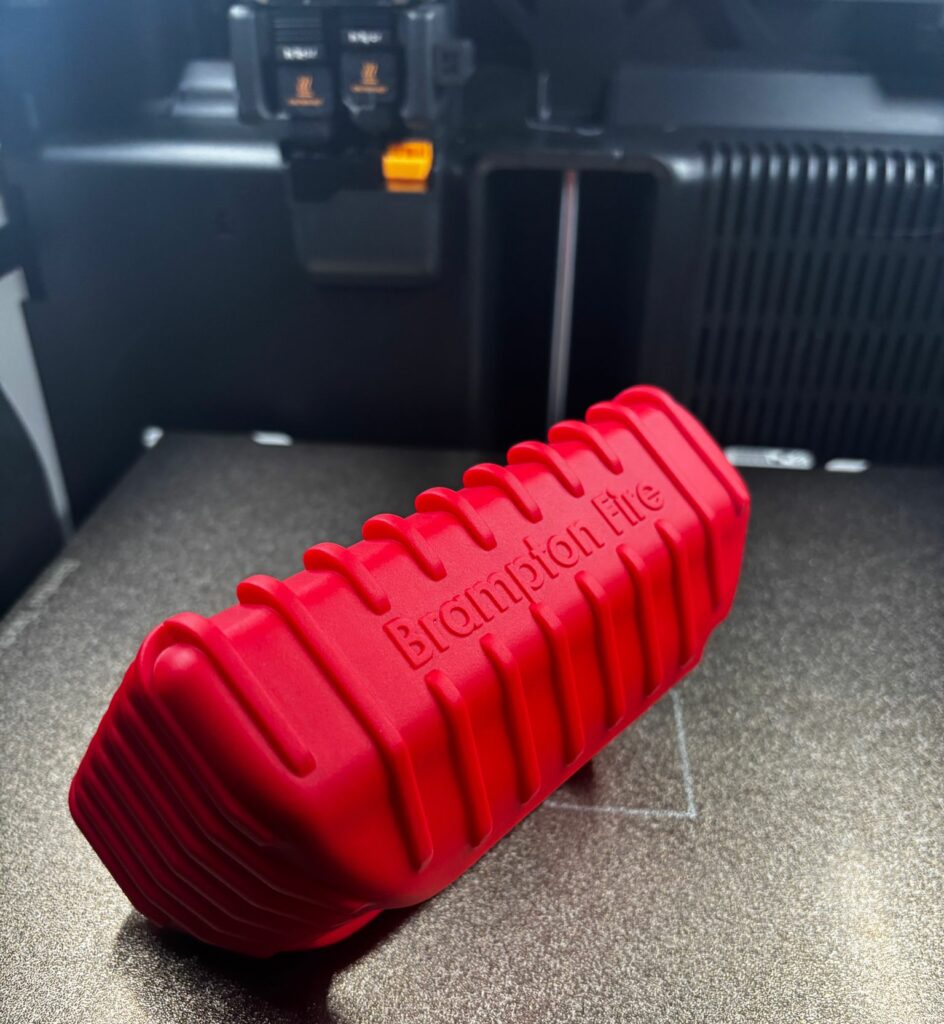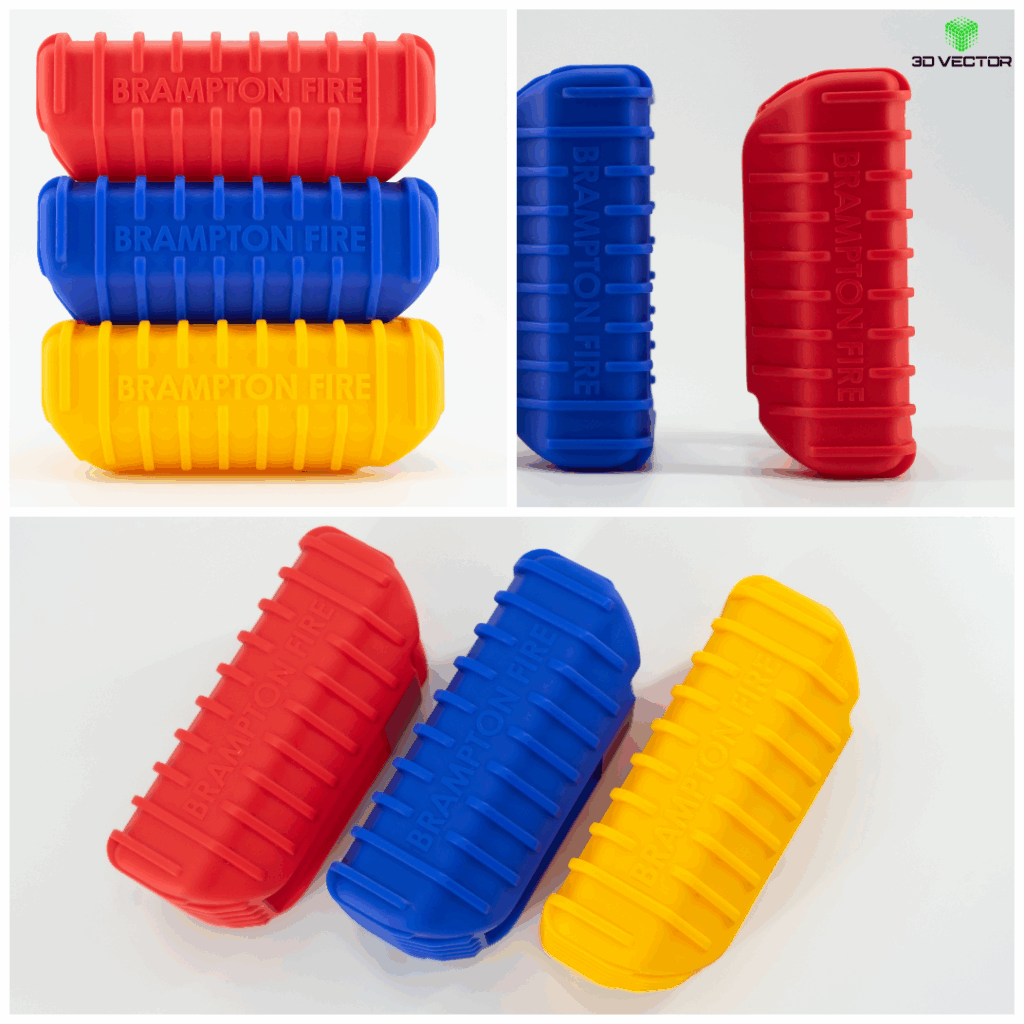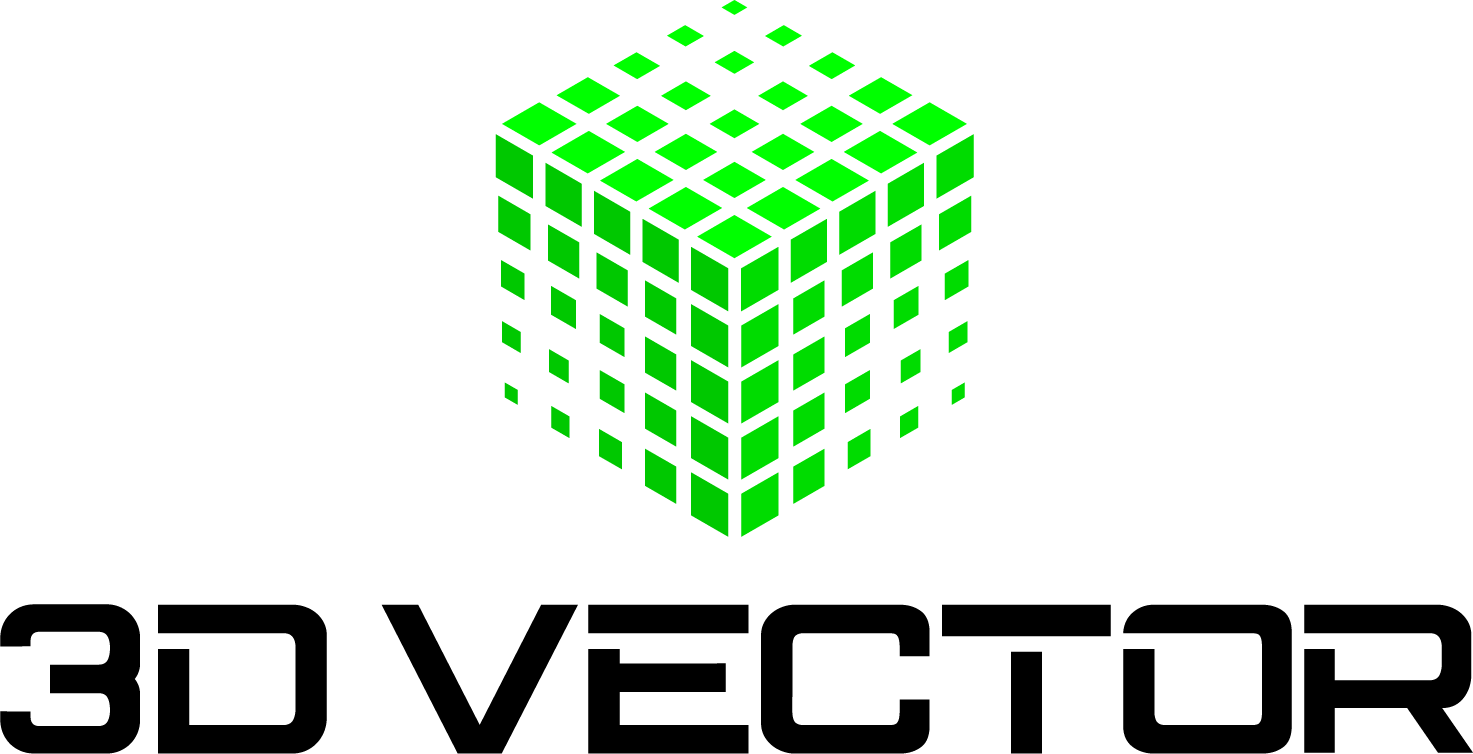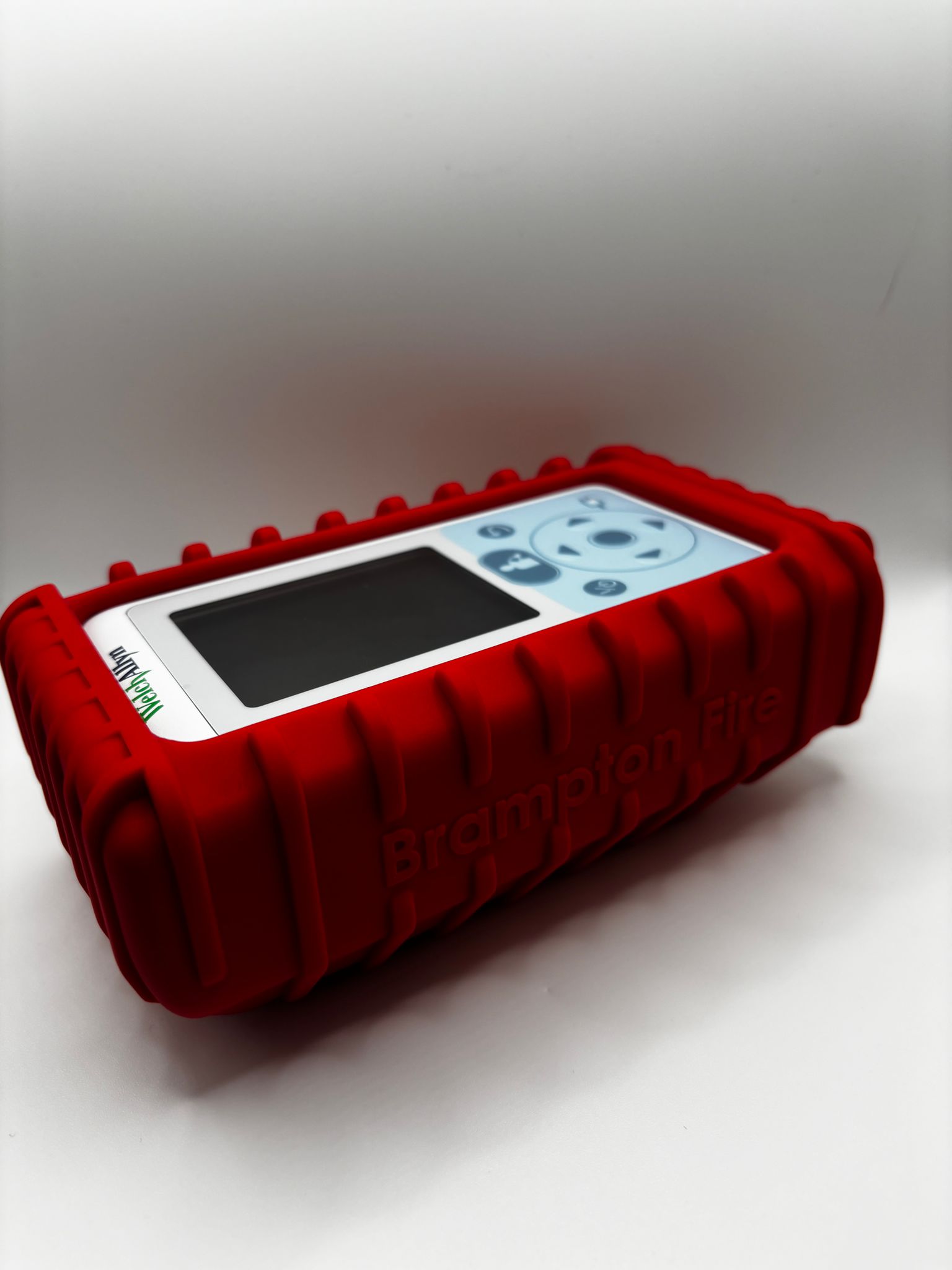In mission-critical environments—where technology meets the unpredictable—equipment must be reliable, resilient, and ready for impact. That’s exactly the mindset that drove 3D Vectors to deliver a specialized rubber protector for Brampton Fire, crafted with cutting-edge vacuum casting and advanced castable polyurethane rubber.
This blog explores the full technical journey, from challenge to concept, through material selection, mold creation, casting, and post-processing, culminating in a tough, branded, and field-ready custom rubber case. If you’re an engineer, procurement officer, or product designer looking for durable, short-run protection solutions—this is your deep dive.
Why Rubber Protectors Matter for Device Safety
Modern equipment is often delicate, expensive, and integral to performance. Whether it’s a fire department’s diagnostic tool or a tablet used on construction sites, devices must be protected from:
- Physical shocks (drops, bumps)
- Harsh weather (rain, snow, heat)
- Oils, chemicals, and rough handling
- Unpredictable user environments
A device protector built from high-grade polyurethane rubber (PU rubber) acts as a first line of defense—without compromising usability or portability.

The Challenge: Creating a Protector Worthy of First Responders
Brampton Fire requested a device shell for one of their handheld field monitors. Requirements included:
- Full perimeter shock absorption
- Precision cutouts for buttons, ports, and screen visibility
- A non-slip, gloved-hand-friendly grip
- Integration of custom text (“Brampton Fire“) on the side
- High visibility firehouse red color
- Resilience to moisture, temperature changes, and chemicals
Our team determined that a custom rubber case, made from vacuum-cast polyurethane rubber, would meet and exceed every functional and visual demand.
Choosing the Right Material: Castable Polyurethane Rubber
Why did we select PU rubber for this protector?
Key Advantages of Castable Polyurethane Rubber:
- Superior Toughness – Offers better abrasion and impact resistance than silicone or thermoplastics.
- Flexibility with Structure – Not too soft, not too rigid—ideal for devices that must remain accessible and grippable.
- Weather and Chemical Resistance – PU rubber withstands water, oils, UV, and many chemicals.
- Durability Over Time – Unlike silicone, PU doesn’t degrade quickly under the sun or stress.
- Colorable and Texturable – Can be pigmented to any brand color and formed with custom surface textures or logos.
In short, castable polyurethane rubber combines the best traits of flexibility and toughness—essential for protective equipment in high-stakes scenarios.
Why Vacuum Casting Was the Perfect Manufacturing Method
Vacuum casting is a low-volume manufacturing method that utilizes a master pattern, a silicone mold, and degassed liquid polyurethane to form complex, detailed components.
It’s particularly ideal for applications like this one, where we need:
- Fast turnaround for prototyping and small-batch production
- Superior detail replication (like logos and textures)
- Economical tooling compared to injection molding
- Wide material choices, especially castable urethane rubbers
How Vacuum Casting Works
Step 1: Design and Create the Master Pattern
We began by CAD modeling the protector shell, accounting for the exact dimensions of the Brampton Fire device. The master was then 3D printed using SLA technology with high-resolution resin, offering a smooth finish and dimensional accuracy within ±0.1 mm.
Step 2: Silicone Mold Creation
The master was suspended in a casting box, and liquid silicone was poured over it. Once cured, the mold was split to form two perfectly matched halves. This mold would be used for up to 25–30 castings before needing replacement.
Step 3: Polyurethane Rubber Casting
We mixed our castable polyurethane rubber, pigmented it red, and degassed the material under vacuum to remove air bubbles. The liquid rubber was poured into the silicone mold while still under vacuum to ensure zero voids or trapped gases.
Step 4: Curing and Post-Processing
The mold was placed in a curing oven for a few hours. Once cured, we de-molded the part, trimmed flash lines, and post-cured the rubber to improve strength and heat resistance. The final surface was smooth, strong, and professional.
Special Features of the Rubber Protector
Our final product was more than just functional—it was tailored down to the micron.
- Precision Fit – Hugs the device snugly without restricting controls
- Shock Protection – Thickened edges and ribbed bumpers
- Anti-Slip Surface – Grip channels for handling with gloves
- Brand Identity – Custom debossed “Brampton Fire” logo
- Color Matching – Fire red, pigmented during the casting process
- Thermal Stability – Rated from -40°C to +80°C
This protector is now deployed with Brampton Fire and performing flawlessly.
Beyond Emergency Services: Who Else Needs Custom Rubber Cases?
The same castable polyurethane rubber and vacuum casting process we used here can be adapted for:
- Medical Equipment Shells – Patient-safe, easily cleaned, flexible
- Consumer Electronics – Wearables, handhelds, fitness tools
- Industrial Tools – Wireless meters, remotes, field tools
- Military and Defense – Ruggedized GPS and communications devices
- Testing Equipment – Lab sensors and mobile probes
If your device needs to survive drops, splashes, rough environments—or simply stand out with unique branding—custom rubber protectors are your answer.
The 3D Vectors Process: From Concept to Completion
We don’t just build rubber protectors. We engineer protection with purpose.
- Free Consultation – We evaluate your device and use case
- CAD + Engineering – Every protector is designed in-house
- Master Model Creation – SLA-printed or CNC-machined
- Vacuum Cast Prototyping – With your preferred PU rubber hardness, color, and texture
- Validation & Testing – Fit, drop tests, environmental testing
- Production Scaling – Short run? Ongoing batches? We’ve got you
- Brand Customization – Add your logo, color codes, patterns, or texture
Every detail—from grip zones to port alignment—is fine-tuned for real-world performance.
Why Clients Choose 3D Vectors for Rubber Device Protection
- Material Expertise – PU rubber, silicone, elastomers: we know their limits and uses
- Fast Turnarounds – Days, not weeks, for working samples
- True Customization – One-size-fits-none is our motto
- Tooling Efficiency – No giant mold costs upfront
- Low Risk Entry Point – Start small, test thoroughly, scale confidently
With experience across industries and a growing portfolio of specialty device protectors, we bring big-manufacturer quality to small and medium-sized teams who can’t afford to compromise.

Ready to Build Your Rubber Case?
At 3D Vectors, we believe protection shouldn’t be an afterthought. It should be engineered into the product DNA. Whether you’re creating a new field device or upgrading protection for existing tech, our custom rubber cases offer the best performance, cost-efficiency, and design freedom.
Let’s talk. Whether it’s a 1-off prototype or a 500-piece batch—we’re ready.


